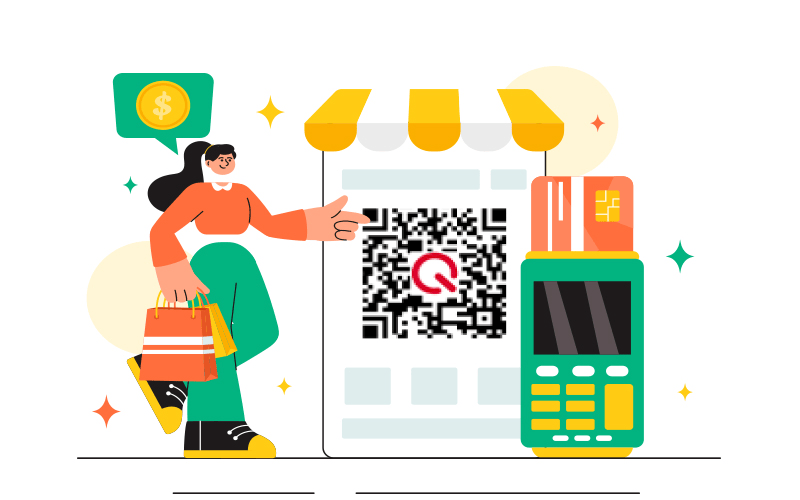
The Impact of QR Codes on Retail Shopping
QR codes are transforming the retail landscape, offering seamless integration between physical and digital shopping experiences. Recent data highlights their widespread use, with 63% of QR code scans occurring outside retail stores. By adopting QR codes, retailers can enhance customer engagement, streamline operations, and drive sales growth.
Key Benefits of QR Codes in Retail Shopping
1. Bridging the Gap Between Physical and Online Spaces
- Instant Access: QR codes enable customers to access product details, reviews, and availability on e-commerce platforms directly from the store.
- Interactive Shopping: By blending in-store and digital experiences, QR codes cater to tech-savvy shoppers and increase conversion rates.
2. Enhancing the Customer Experience
- Product Information: Shoppers can quickly scan QR codes to access additional details about a product, such as ingredients, usage, or sustainability practices.
- Effortless Checkout: QR codes support e-receipts and mobile payments, simplifying transactions and reducing wait times.
3. Inspiring Repeat Purchases
- Personalized Offers: QR codes can lead to tailored discounts and promotions, encouraging customers to return.
- Reorder Convenience: Customers can reorder their favorite products by scanning a QR code linked to their purchase history.
4. Providing Valuable Insights
- Customer Behavior: QR codes allow retailers to collect data on customer preferences and interactions.
- Campaign Tracking: Analytics from QR code scans help retailers evaluate the effectiveness of marketing campaigns and refine strategies.
5. Seamless Customer Interaction
- Engagement: QR codes provide an interactive way for customers to explore brands and products.
- Remarketing: Retailers can use scanned data to send targeted offers or reminders, fostering customer loyalty.
6. Cost Savings and Marketing Effectiveness
- Reduced Costs: QR codes eliminate the need for physical brochures and printed materials.
- Performance Metrics: Retailers can track QR code usage to measure marketing success and optimize campaigns.
Best Practices for Using QR Codes in Retail
- Transparency: Clearly explain what the QR code offers to build trust and encourage engagement.
- Effective Call-to-Actions: Use compelling phrases like "Scan for a 10% discount" or "Learn more about this product."
- Content Optimization: Ensure QR codes link to mobile-friendly, relevant, and engaging content.
- Strategic Placement: Position QR codes where customers can easily see and scan them, such as on packaging, shelves, or marketing materials.
- Tracking Success: Use analytics tools to monitor QR code performance and adjust strategies accordingly.
Examples of Innovative Uses in Retail
1. Rose City Goods
- Application: Product tags with QR codes link customers to additional product information and customer reviews.
- Outcome: Enhanced shopping experience and increased conversions.
2. KOTN
- Application: QR codes on clothing labels provide insights into ethical sourcing and manufacturing practices.
- Outcome: Strengthened customer trust and brand loyalty.
3. Telfar
- Application: QR codes on shopping bags grant access to exclusive content and discounts.
- Outcome: Boosted customer engagement and repeat purchases.
4. Moscot
- Application: In-store QR codes let customers virtually try on glasses and learn about products.
- Outcome: Increased sales and customer satisfaction.
Avoiding Pitfalls with QR Codes
- Sizing Issues: Ensure QR codes are neither too small to scan nor so large they detract from the design.
- Pointing to Suboptimal Pages: Direct customers to optimized, mobile-friendly landing pages.
- Auto-Playing Media: Avoid intrusive content that starts automatically upon scanning.
- Improper Placement: Position QR codes in easily accessible, high-visibility locations.
Conclusion
QR codes are a game-changer in retail, enhancing customer experiences, driving engagement, and boosting sales. By leveraging this technology strategically, retailers can seamlessly integrate physical and digital shopping experiences, creating an omnichannel approach that fosters customer loyalty and satisfaction.